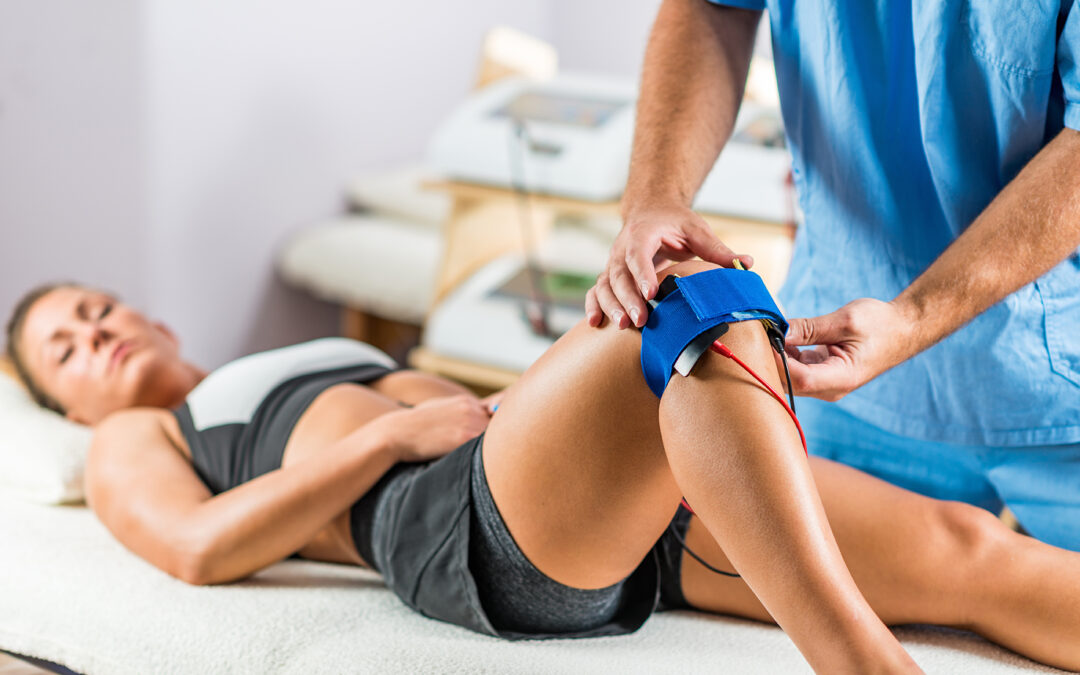Contents
If you’re suffering from knee pain, you know how it can negatively impact your life. Like other kinds of chronic pain, recurring knee pain can have many different causes. It is important to seek treatment when knee pain begins, even if it is infrequent or not constant. Generalized pain can develop into chronic pain if left untreated.
How common is knee pain?
According to one study, frequent knee pain affects 25% of adults. This pain can limit function and range of motion, which can impair quality of life. A variety of factors lead to this condition, from injury to osteoarthritis. Fortunately, there are available knee pain treatments. You should seek care from medical doctors in cases of emergency, but often knee pain can be treated without that level of intervention. Physical therapy is one option that can play many beneficial roles in knee pain treatment.
What roles can physical therapists play in knee pain treatment?
- Diagnosing causes — Diagnosis is an important early step. Physical therapists often conduct a thorough physical evaluation of patients during initial visits. This can allow them to determine the underlying causes of a patient’s knee pain. An evaluation can involve assessment of joint mobility, muscle strength and flexibility. Physical therapists can also examine injuries that cause knee pain. These include fractures, meniscus injuries and torn ligaments.
- Analyzing gait — Another part of the evaluation process for knee pain treatment can be gait analysis. Weakness and knee pain may be associated with a gait disorder. This can be addressed with certain physical therapy techniques. There may be particular imbalances or weaknesses in the knee. This analysis can help physical therapists to identify the causes that need to addressed in knee pain treatment
- Developing treatment plans — Physical therapy allows for a personal approach. Once a physical therapist has assessed their patient’s conditions, they can develop a personalized treatment plan. This process can involve an ongoing dialogue between patient and therapist to ensure all patient needs and preferences can be met. A personalized treatment plan can include many of the tools physical therapists have available. These range from manual therapy to at-home exercises.
- Preventing athletic injury — Preventing and treating athletic injuries are essential for maintaining an athlete’s health. Sports injuries & rehabilitation programs can help athletes recover quickly from injuries and reduce the risk of further injury later on.
- Providing education — Education is a valuable resource. Expert physical therapy specialists understand this, and can provide education to patients. Therapists can educate patients on the causes of knee pain and ways to prevent further injury. Patients can learn proper techniques for exercise and other activities to reduce the risk of knee pain.
- Improving posture — Part of education is learning to improve posture. Poor posture can contribute to knee pain. Physical therapy can help patients improve posture, which can alleviate pressure on the knee joint. This can be especially important for people who work at physically demanding jobs. Workplace solutions can be part of this as well. Learning how to maintain proper posture at a workstation can lead to significant health benefits.
- Monitoring progress — Part of a physical therapist’s role is to provide support throughout the treatment process. As a patient engages with different physical therapy techniques for knee pain treatment, physical therapy specialists can monitor and record progress. A physical therapist can also help adjust a treatment plan as needed to improve recovery. This can help to ensure that the patient’s knee pain treatments continue to be effective.
- Prescribing exercises — One popular physical therapy technique is targeted exercise. Physical therapists can prescribe certain exercises for the knee joint and the muscles surrounding it. This can help to build strength and flexibility in the knee and reduce imbalances that may be causing pain.
- Manual therapy — Manual therapy is a term for hands-on physical therapy techniques. By mobilizing soft tissue and joints, manual therapy can help reduce inflammation and relieve pain. This can also lead to improved flexibility and range of motion at the knee joint.
- Using modalities — Physical therapy modalities include multiple techniques that can be beneficial in certain cases. These include hot and cold therapy as well as ultrasound. Depending on the underlying causes of your knee pain, treatment through these modalities can be highly effective.
Lattimore Physical Therapy can help treat your knee pain
At Lattimore Physical Therapy, our physical therapy specialists work in a variety of roles to help you every step of the way in your treatment. Our expert team is committed to helping our patients in the “Lattimore way” with care and dedication. We work with patients to develop specialized treatment plans designed to fill all the roles you need.
Contact our team today for more information or to schedule an initial appointment.



